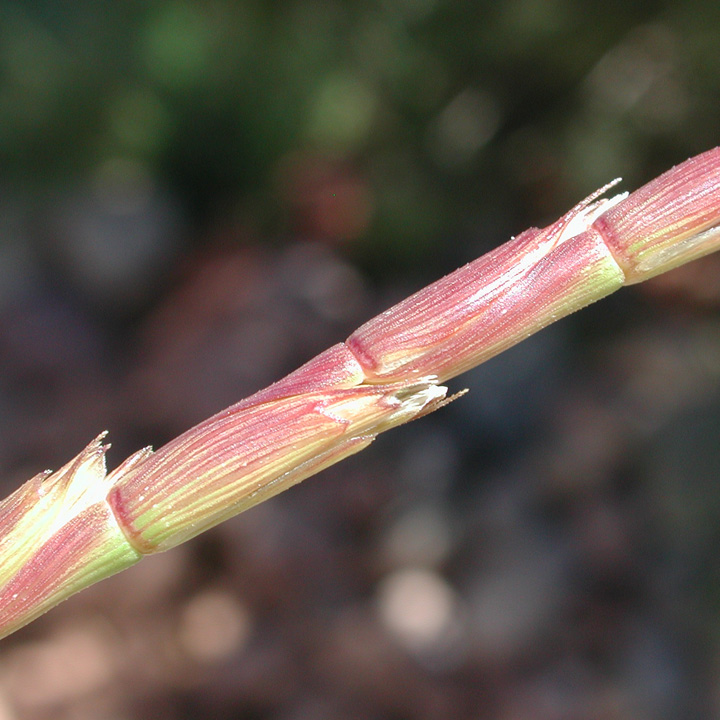Triticeae
|
Family: Poaceae |
Plants annual or perennial; sometimes cespitose, sometimes rhizomatous. Culms annual, not woody, usually erect, not branching above the base; internodes hollow or solid. Sheaths usually open, those of the basal leaves sometimes closed; collars without tufts of hair on the sides; auricles usually present; ligules membranous or scarious, sometimes ciliolate, those of the upper and lower cauline leaves usually similar; pseudopetioles absent; blades linear to narrowly lanceolate, venation parallel, cross venation not evident, without arm or fusoid cells, surfaces without microhairs, not papillate, cross sections non-Kranz. Inflorescences usually spikes or spikelike racemes, with 1-5 sessile or subsessile spikelets per node, occasionally panicles, sometimes with morphologically distinct sterile and bisexual spikelets within an inflorescence; pedicels absent or to 4 mm; disarticulation usually above the glumes and beneath the florets, sometimes in the rachises, sometimes at the inflorescence bases. Spikelets usually laterally compressed, sometimes terete, with 1-16 bisexual florets, the distal (or only) floret sometimes sterile; rachillas sometimes prolonged beyond the base of the distal floret. Glumes unequal to equal, shorter than to longer than the adjacent florets, subulate, lanceolate, rectangular, ovate, or obovate, 1-5-veined, absent or vestigial in some species; florets laterally compressed to terete; calluses glabrous or hairy; lemmas lanceolate to rectangular, stiffly membranous to coriaceous, sometimes keeled, 5(7)-veined, veins not converging distally, inconspicuous, apices entire, lobed, or toothed, unawned or awned, awns terminal, unbranched, lemma-awn junction not evident; paleas usually subequal to the lemmas, sometimes considerably shorter or slightly longer than the lemmas; lodicules 2, without venation, usually ciliate; anthers 3; ovaries with hairy apices; styles 2, bases free. Caryopses ovoid to fusiform, longitudinally grooved, not beaked, pericarp thin; hila linear; embryos about 1/3 as long as the caryopses. x = 7. |

